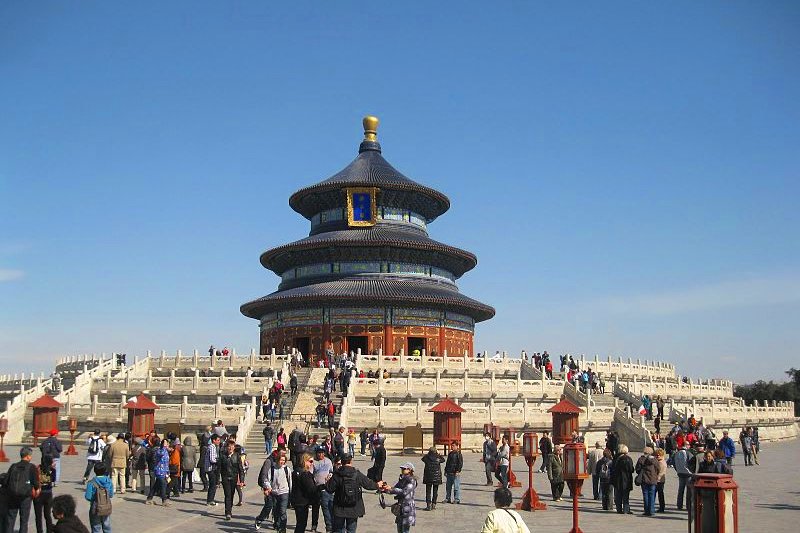 Hall of Prayer for Good Harvest, Temple of Heaven, Beijing, China
Hall of Prayer for Good Harvest, Temple of Heaven, Beijing, ChinaSource: https://commons.wikimedia.org/wiki/File:Temple_of_Heaven_ovedc_38.JPG
Author: Ovedc

Author: Ovedc

The Temple of Heaven, in Beijing, China, is an ancient Taoist site of imperial rituals. It is the place where Chinese emperors of the Ming and Qing dynasties conduct yearly ceremonies of prayer to Heaven seeking good harvest. Although the temple is regarded as Taoist, the rituals and the worship of Heaven, pre-dates Taoism.
The Temple of Heaven was inscribed as a World Heritage Site during the 22nd session of the World Heritage Committee which convened in Kyoto, Japan, on 30 November to 5 December, 1998.
The World Heritage inscription was entitled "Temple of Heaven: an Imperial Sacrificial Altar in Beijing". The inscription recognises the Temple of Heaven as a masterpiece of architecture and landscape design that graphically illustrates a cosmogony of great importance for the evolution of one of the world's great civilizations.
The symbolic layout and design of the Temple of Heaven is said to have a profound influence on the architecture of the Far East, and that the legitimacy of China's feudal dynasties is symbolized by the design and layout of the Temple of Heaven.
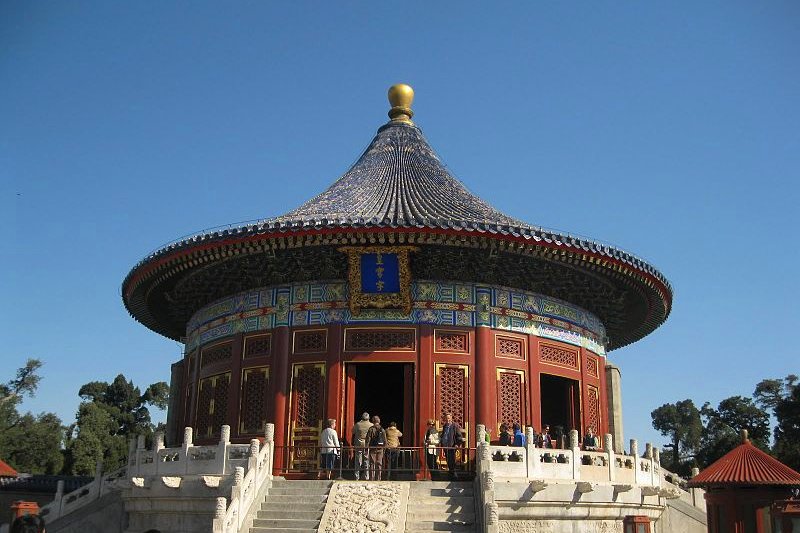 The Imperial Vault of Heaven
The Imperial Vault of HeavenSource: https://commons.wikimedia.org/wiki/File:Temple_of_Heaven_ovedc_15.JPG
Author: Ovedc

Author: Ovedc

World Heritage Site Inscription Details
Location: N 39 52 56.1 E 116 24 23.7 in Tiantan Park, Beijing, ChinaInscription Year: 1998
Type of Site: Cultural
Inscription Criteria: I, II, III
Location of the Temple of Heaven
The Temple of Heaven is located on the southeast part of central Beijing. It covers an area of 2.73 square km. The temple was constructed between 1406 and 1420 by the Yongle Emperor, who also built the Forbidden City, around the same time.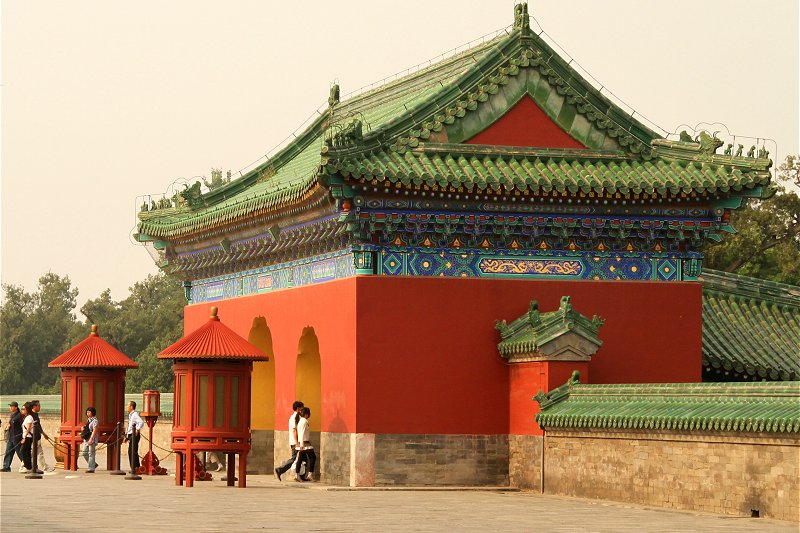 Temple of Heaven
Temple of HeavenSource: https://commons.wikimedia.org/wiki/File:Temple_of_Heaven_17_(4935061185).jpg
Author: Ronnie Macdonald

Author: Ronnie Macdonald

The temple complex was only given the name Temple of Heaven in the 16th century, during the reigh of the Jiajing Emperor, who also built three other important temples in Beijing, namely the Temple of the Sun, the Temple of the Earth and the Temple of the Moon. After the abolishment of the Qing Dynasty, President Yuan Shih-kai of the Republic of China in 1914 performed the Ming Dynasty prayer rituals at the Temple of Heaven, in an effort to have himself aligned as the Emperor of China.
Layout of the Temple of Heaven
The Temple of Heaven was built on a north-south axis, and comprises the following: Temple of Heaven
Temple of HeavenSource: https://commons.wikimedia.org/wiki/File:3_Temple_of_Heaven.jpg
Author: star5112

Author: star5112

The Hall of Prayer for Good Harvest: This is a triple-gabled circular building, or pagoda. It stands 38 meters tall on a three-level marble base. It is built of wood without the use of nails. The Hall of Prayer for Good Harvest is where Chinese emperors offer prayers for good harvest. Today it is one of the most recognizable icons of Beijing.
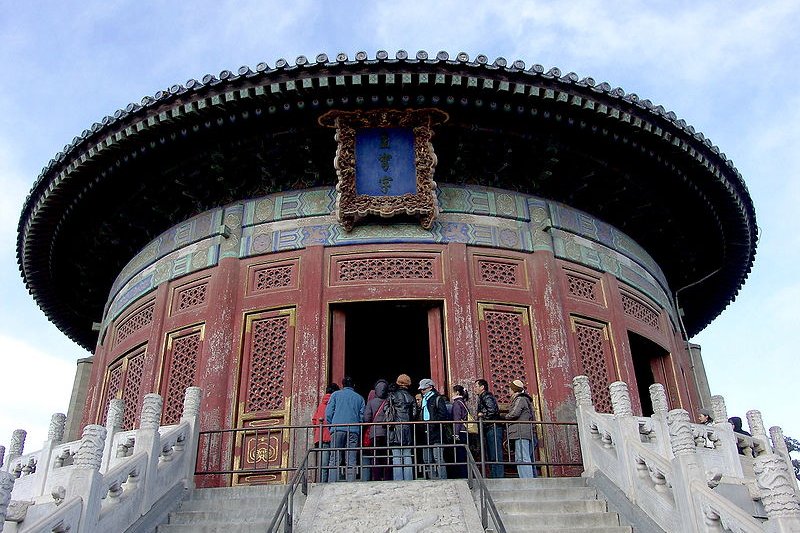 Temple of Heaven
Temple of HeavenSource: https://commons.wikimedia.org/wiki/File:TOH_Another_Hall_3.jpg
Author: Saad Akhtar

Author: Saad Akhtar

The Imperial Vault of Heaven: This is a single-gabled circular building, almost like a scaled-down version of the Hall of Prayer for Good Harvest, which is located to the north of it. The Imperial Vault of Heaven is surrounded by a smooth circular wall called the Echo Wall with acoustics that allows sounds to transmit from it over large distances. Connecting the Imperial Vault of Heaven and the Hall of Prayer for Good Harvest is aq 360-meter long raised walkway called the Vermillion Steps.
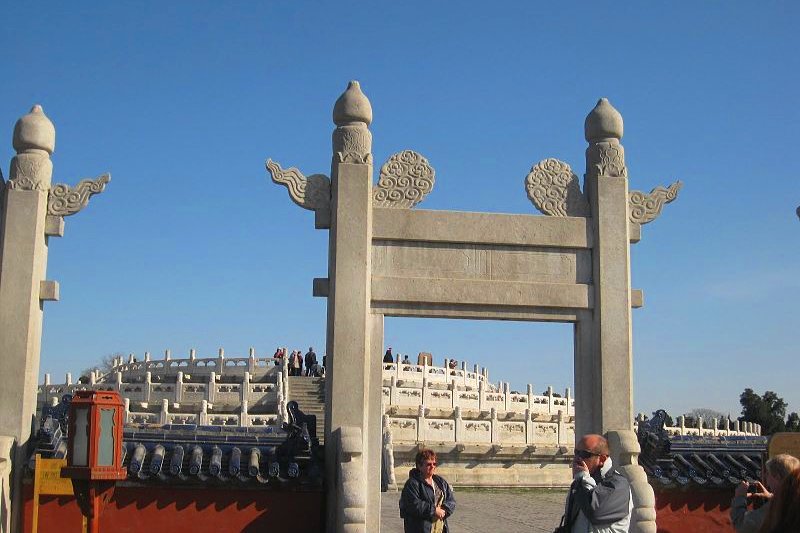 Temple of Heaven
Temple of HeavenSource: https://commons.wikimedia.org/wiki/File:Temple_of_Heaven_ovedc_04.JPG
Author: Ovedc

Author: Ovedc

The Circular Mound Altar is the alter proper. Located south of the Imperial Vault of Heaven, it comprises an empty circular platform on three levels of marble. It was originally built by the Jiajing Emperor in 1530, and rebuilt in 1740. The Circular Mount Altar is where Chinese emperors prayed for good weather.
The architecture of the Temple of Heaven is ripe with symbolism. Earth, represented by square, and Heaven, represented by cirlce, features repeatedly in the design. The bridging of squares and circles reflect the relationship between Earth and Heaven.
The Temple of Heaven is surrounded by a wall which on the north side is semi-circular, representing Heaven, while on the south side, slightly shorter, is a rectangular wall, representing Earth.
The number 9 is representative of the Emperor, and features repeatedly in the design of the Circular Mound Altar.
The Hall of Prayer for Good Harvest has four inner pillars, twelve middle pillars and twelve outer pillars. These represent the four seasons, the twelve months and the twelve traditional Chinese hours. The structures are all roofed with blue titles, a symbol of Heaven.
The Temple of Heaven is one of the most important temples for the Emperors of China. Regarded as the Son of Heaven, the Chinese emperors offer prayers at this temple to show that he derives his authority directly from Heaven.
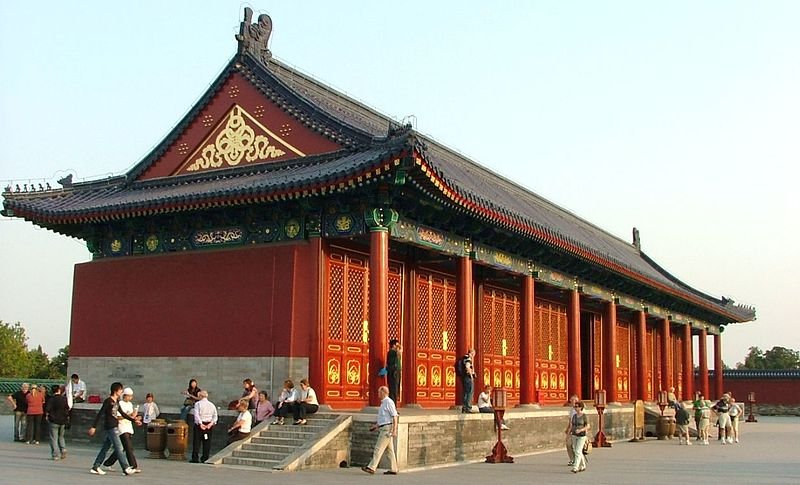 One of the halls at the Temple of Heaven
One of the halls at the Temple of HeavenSource: https://commons.wikimedia.org/wiki/File:Temple_in_Beijing.jpg
Author: Kzrulzuall

Author: Kzrulzuall

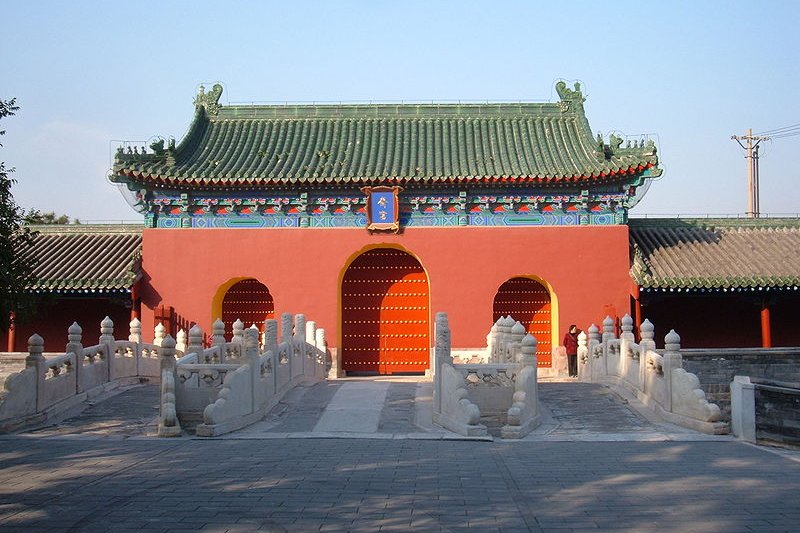 The Hall of Abstinence, Temple of Heaven
The Hall of Abstinence, Temple of HeavenSource: https://commons.wikimedia.org/wiki/File:Hall_of_Abstinence_east_gate_2.JPG
Author: BrokenSphere

Author: BrokenSphere

Twice a year, the Emperor leaves the Forbidden City and undertake an elaborate ceremonial procession to the Temple of Heaven. Commoners are forbidden from viewing the imperial procession. During this time, he is garbed in special ceremonial robes, and abstains for partaking meat.
At the Temple of Heaven the Emperor conduct rituals seeking a good harvest from Heaven. The most important part of the ceremony takes place at the winter solstice, when the Emperor perform special rituals at the Circular Mound Altar. The ceremony had to be perfectly executed lest calamity befall the entire nation.
The Temple of Heaven was inscribed as a World Heritage Site in 1998. Today has become a popular park for the people of Beijing to exercise.
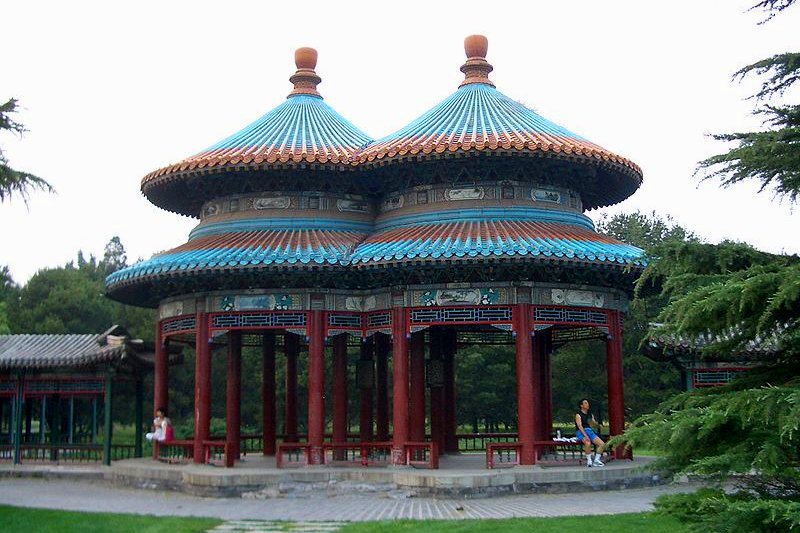 Temple of Heaven
Temple of HeavenSource: https://commons.wikimedia.org/wiki/File:Double_Ring_Longevity_Pavilion_4611.jpg
Author: Vmenkov

Author: Vmenkov

List of World Heritage Sites in China
 Latest updates on Penang Travel Tips
Latest updates on Penang Travel Tips
 Map of Roads in Penang
Map of Roads in Penang
Looking for information on Penang? Use this Map of Roads in Penang to zoom in on information about Penang, brought to you road by road.
Copyright © 2003-2025 Timothy Tye. All Rights Reserved.

 Go Back
Go Back